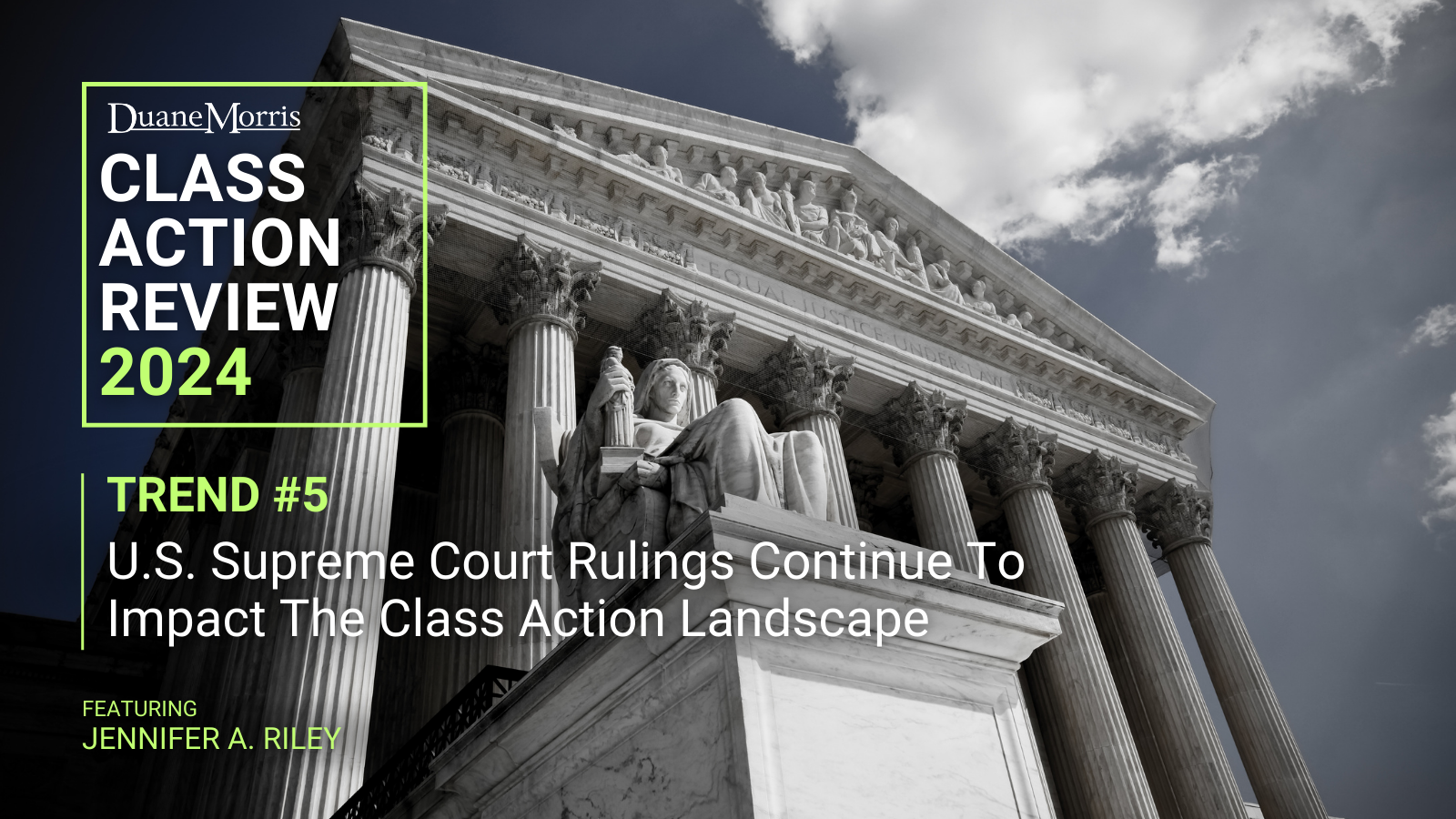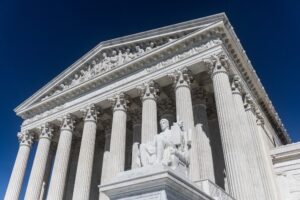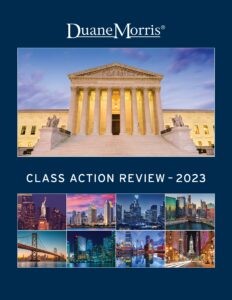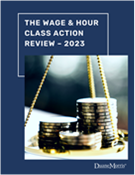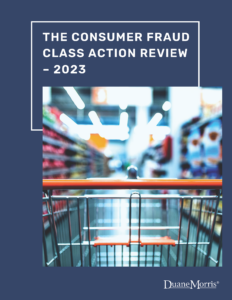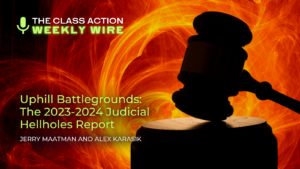 By Gerald L. Maatman, Jr., Katelynn Gray, and Gregory S. Slotnick
By Gerald L. Maatman, Jr., Katelynn Gray, and Gregory S. Slotnick
Duane Morris Takeaways: On January 23, 2024, in Chen et al. v. Reardon, Index No. 908146-23, in the Supreme Court of the State of New York (Albany County), a judge denied a motion to dismiss filed by the New York Department of Labor (NYDOL) seeking dismissal of a lawsuit claiming the agency improperly closed wage theft investigations for home care aides by way of inappropriate rulemaking under New York’s State Administrative Procedures Act (NYSAPA). Specifically, in evaluating the NYDOL’s motion and giving the workers the benefit of every possible inference, the court held the NYDOL may have improperly engaged in formal rulemaking without abiding by all required prerequisites (such as public notice) in shutting down its investigations of the workers’ unpaid wage claims due to collective bargaining agreements that included mandatory arbitration. The judge concluded that a “reasonable view of the facts stated” describes the NYDOL’s application of a “fixed, general principle” of dismissing every complaint that was subject to mandatory arbitration (i.e., a NYDOL rule), rather than “ad hoc decisions” evaluating the individual facts and circumstances of each claim. Id. at 9.
The decision highlights a state court’s willingness to scrutinize a state agency’s “informal” broad interpretations of its own investigation procedures under state law, and ultimately provides allegedly aggrieved employees with reasonable means to challenge the agency’s actions.
Case Background
Five home care aides who provided live-in services to elderly and disabled patients claim they typically worked 24-hour shifts without ever receiving five hours of uninterrupted sleep or three hours of meal breaks. Id. at 2. The workers alleged that they were never paid for more than 13 hours of work for any such 24-hour shifts despite not receiving the required sleeping and meal break periods in alleged violation of the New York Labor Law (NYLL) and its “13-hour rule.” Id. After working these shifts for some time, the workers each filed their own complaint with the NYDOL, claiming their compensation structure violated the NYLL.
The NYDOL initially accepted the complaints and began investigating. However, when the NYDOL determined that the workers were all subject to mandatory arbitration through a collective bargaining agreement with their respective unions, who had filed grievances on their behalf, the NYDOL terminated each investigation. The NYDOL sent each worker a complaint closing letter stating “we understand other means are available for a resolution of your claims.” One NYDOL investigator explained to a worker that the DOL closed the case “following the advice of our counsel’s office. The [CBA] supersedes our authority in this case. There is no getting around it. The same is true in each case we have closed on this basis.” The NYDOL also issued a press release around the same time stating that it “may accept…cases [involving alleged violations of the 13-hour rule] if an employee is not covered by an arbitration clause.” Id.
In August 2023, the workers filed an Article 78 petition against the NYDOL, seeking that the NYDOL reopen the closed investigations of their claims. Id. at 2-3. The workers argued the NYDOL’s policy of closing the investigations was pursuant to a “rule” within the meaning of the NYSAPA and that the NYDOL failed to submit a notice of proposed rulemaking as required before adopting such a rule. They also claimed the NYDOL’s reliance on that rule before closing their cases was an error of law, that the NYDOL’s jurisdiction is not limited by private arbitration agreements such that termination of their investigations was an abuse of the NYDOL’s discretion. Id.
The NYDOL moved to dismiss the petition and claimed it must be dismissed because it fails to establish a right of mandamus relief and fails to state a claim under the NYSAPA. Id.
The Court’s Decision
The Court determined that in considering a motion to dismiss, the petition must be given a liberal construction, the petitioners must be afforded every possible favorable inference, and the motion should only be granted if there is no “reasonable view of the facts” that could entitle petitioners to relief. Id. at 4.
The NYDOL argued that it has discretionary authority to investigate employer-employee controversies, and that the Article 78 petition could not be used to compel it to engage in a discretionary act. Id. In addressing these positions, the Court found that if a petitioner prevails under either a mandamus to compel or a mandamus to review under New York law, the Court “may grant the petitioner the relief to which he is entitled.” Id. at 5. The Court further found that under appropriate circumstances, such relief could include an order that directs specified action by the respondent. Id. It then held that because the workers asserted various causes of action under state law and alleged that the NYDOL’s decisions to close their complaints were arbitrary and capricious, affected by errors of law, and abuses of discretion, a judgment in favor of the workers could appropriately require the NYDOL to revisit their complaints. Id. at 6-7.
As for the workers’ claims under the NYSAPA and the NYDOL’s potentially improper rulemaking, the NYDOL argued that its determination to decline to investigate the individual petitioners’ claims was specific to the facts and circumstances of the complaints and subsequent investigations, and not of “general applicability that implements or applies law.” Id. The Court opined that the NYSAPA requires the NYDOL to comply with certain procedural requirements before adopting any “rule” and that if the NYDOL engaged in formal rulemaking but did not comply with the procedural requirements of the NYSAPA, that regulatory action must be annulled. Id. at 6-7.
The NYDOL conceded that it did not follow the rulemaking procedures laid out in the NYSAPA, and the only question the Court needed to decide was whether the workers adequately pled that NYDOL’s decision to terminate its investigations was pursuant to a rule within the meaning of the NYSAPA. Id. at 7. It noted that a “rule” under the NYSAPA is a fixed, general principle applied without consideration of other relevant facts and circumstances, as distinguished from ad hoc decision-making based on individual facts and circumstances. Id.
The Court reasoned that “rules” direct what action should be taken regardless of individual circumstances and apply to future courses of conduct. It held that a “policy” dictating specific results without regards to other relevant circumstances is subject to the NYSAPA’s rulemaking requirements. Id. at 8.
In this case, the Court found that the workers had alleged that the NYDOL dismissed each of their complaints because their unions had entered into collective bargaining agreements with their employers that called for mandatory arbitration of their claims. Id. at 8-9. The workers also alleged that the NYDOL’s practice or policy of dismissing complaints on this basis was rigidly applied without regard to aides’ individualized circumstances or any mitigating factors. Id. The NYDOL investigator’s statement to one worker that the NYDOL was required to terminate all investigations of the workers due the collective bargaining agreements and that “there is no getting around it” was further evidence in support of the workers’ petition that the NYDOL engaged in improper rulemaking. Id. at 9.
The Court ultimately gave the workers’ petition a liberal construction, accepted its pleaded facts as true, and gave them the benefit of every possible inference, denying the NYDOL’s motion to dismiss the petition. Id. The Court determined that the workers’ petition sufficiently alleged the NYDOL’s application of a fixed, general principle of dismissing every complaint that was subject to a mandatory arbitration agreement as opposed to an “ad hoc decision” based on individual facts and circumstances. Id.
Implications For Businesses
The Chen decision illustrates that under appropriate circumstances, judges will not hesitate to question broadly-applicable “policies” of state agencies akin to “rules” under state law. As evidenced in this case, such scrutiny includes denying state agency motions to dismiss claims brought by aggrieved workers who feel an agency failed to follow its own procedural requirements in closing investigations into their claims. It also serves as a timely reminder for all employers of the ever-present possibility that state agencies may still investigate workers’ claims despite the existence and application of perfectly valid mandatory arbitration agreements. Employers should always remain cautious any time a state agency closes an investigation before completion due to the possibility such closure may later be found to have been improper by a court. Employer skepticism of broadly applicable state agency policies concerning workers’ claims that results in uniform outcomes is also warranted, especially when an agency confirms such position in press releases!


